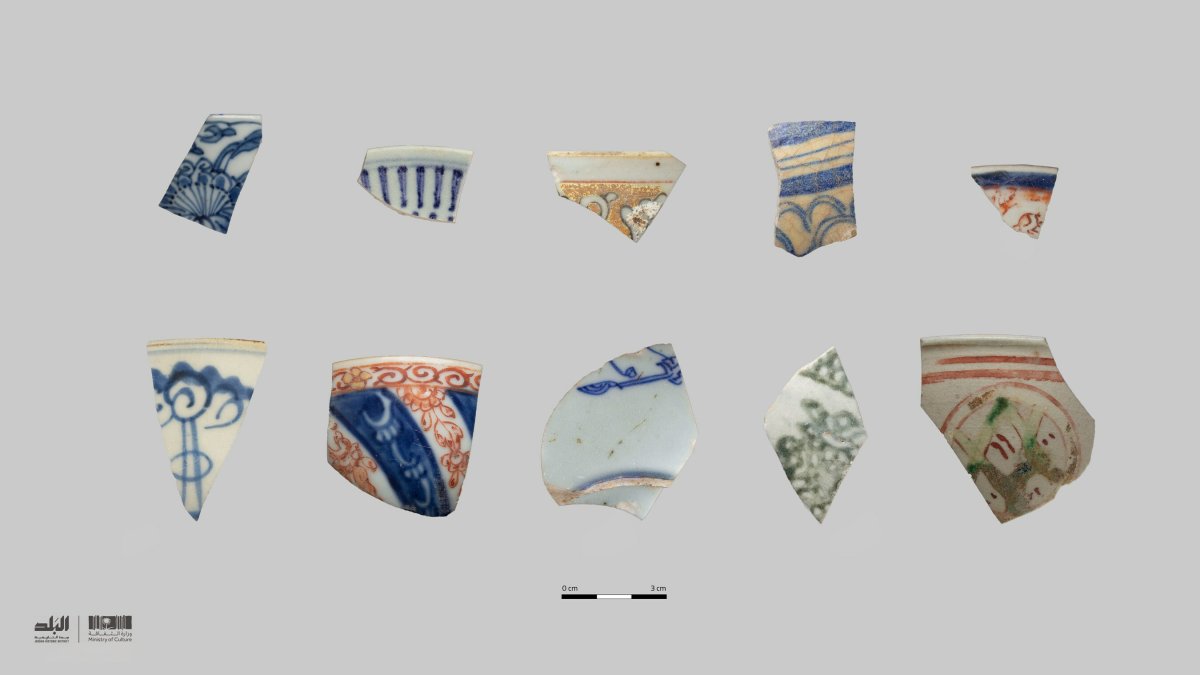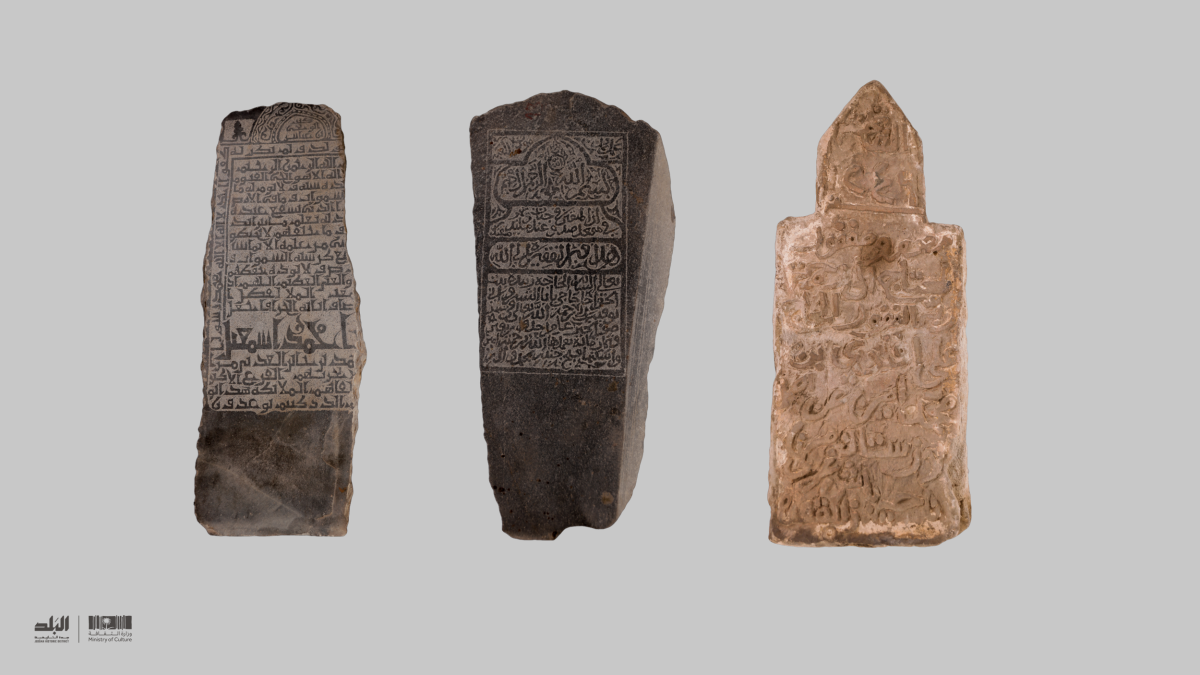Archaeologists have unearthed around 25,000 remains in the historic center of Jeddah, the second-largest city in Saudi Arabia.
The remains include more than 11,400 fragments of pottery, almost 11,400 animal bones and roughly 1,700 shells, as well as building materials and artifacts made from glass and metal, the Jeddah Historic District Program announced.
The finds are the result of an archaeological project that began exploring the city's historic district, known as al-Balad, in 2020.
"These objects allow us to reconstruct the daily life of ancient Jeddah," Laurence Hapiot, director of the Department of Antiquities Care with the JHDP, told Newsweek.
"For example, fragments of pottery can teach us about the far-reaching trade network of the ancient Caliphates. Meanwhile, the meticulous study of animal bones and plant remains found during archaeological excavations allows our researchers to reconstruct not only the diet of the ancestors of modern-day Jeddah but also the environmental and climatic conditions of the past."
The materials uncovered in the area constitute a "valuable addition" to the field of archaeology in Saudi Arabia, the JHDP said in a press release.

Al-Balad, which historically served as the center of Jeddah, has been preserved since the city—located on the eastern shore of the Red Sea—was established in the 7th century. The historic district is listed as a UNESCO World Heritage Site.
"From the 7th century AD it was established as a major port for Indian Ocean trade routes, channelling goods to Mecca. It was also the gateway for Muslim pilgrims to Mecca who arrived by sea," the UNESCO description reads.
"These twin roles saw the city develop into a thriving multicultural center, characterized by a distinctive architectural tradition, including tower houses built in the late 19th century by the city's mercantile elites, and combining Red Sea coastal coral building traditions with influences and crafts from along the trade routes."

"Until we started our archaeological investigation in the old district of Jeddah, we knew that Jeddah dated back at least to the beginning of Islam. So, the city existed at least as early as the 7th century. There are other historical texts and travelers' narratives that talk about Jeddah, but until now, we lacked archaeological evidence," Sami Nawar, executive consultant for antiquities care with the JHDP, told Newsweek.
"Our excavations in the heart of the city are truly pioneering since this is the first time that the centuries-long history of Jeddah is studied through systematic archaeological methods. It is important to highlight that we have very limited archaeological information from the urban centers in the core territory of Islam.
"Therefore, our excavations will play a very important role in filling the gaps in our knowledge not only about the history of Jeddah but also about the broader history of Islam."
The fieldwork that revealed the latest set of remains in the old part of the city focused on four different sites: the Othman bin Affan Mosque, the archaeological site of al-Shona, the Eastern Moat and a segment of the Northern Wall. The oldest of the uncovered remains date back to the 7th and 8th centuries, although the archaeologists also identified finds from much later periods.
Research at the Othman bin Affan Mosque revealed that it is at least 1,200 years old, while archaeologists also found a number of artifacts at the site during the latest project.
Among the artifacts found were ceramic vessels and pieces of high-quality porcelain—including some made in the Chinese province of Jiangxi that potentially date back to the 16th-19th centuries.
The archaeologists also conducted analyses on ebony pillars found on the sides of the mihrab (a niche in the wall of a mosque), determining that they likely date back to the 7th and 8th centuries. The origin of the ebony—a dense, blackish wood—was found to be Ceylon Island (now known as Sri Lanka) in the Indian Ocean, highlighting the far-reaching trade connections of historic Jeddah.

At the archaeological site of Al-Shona, which dates back to at least the 19th century (with indications of even older remains), the researchers found numerous pottery fragments consisting of porcelain and other ceramics from Europe, Japan and China dating back to the 13th and 14th centuries.
"Al-Shona illustrates perfectly the constantly changing nature of the city. The function of the site transferred from clearly military (an armory or garrison building) to purely commercial (a merchant warehouse) in line with the historical events that morphed Jeddah and the position of the city in the Muslim world throughout the centuries," Hapiot said.
The archaeological project also uncovered a section of the city's historic wall in the north and a segment of the defensive moat on its east side.
These finds have provided "invaluable information on the development of the fortification system that protected historic Jeddah up until 1947," Hapiot said.
"Furthermore, it enabled our researchers to trace the line of the fortifications all around the ancient city. This information is crucial for the protection and preservation of these historic remains under the modern city."
Finally, the archaeologists uncovered several tombstones, made from materials such as marble and granite, in different locations within the old city. The tombstones, which may date back to the 8th and 9th centuries, display inscriptions of names, epitaphs and verses from the Quran.
Do you have a tip on a science story that Newsweek should be covering? Do you have a question about archaeology? Let us know via science@newsweek.com.
Update 2/9/24, 7:09 a.m. ET: This article was updated with comments from Laurence Hapiot and Sami Nawar.
Uncommon Knowledge
Newsweek is committed to challenging conventional wisdom and finding connections in the search for common ground.
Newsweek is committed to challenging conventional wisdom and finding connections in the search for common ground.
About the writer
Aristos is a Newsweek science reporter with the London, U.K., bureau. He reports on science and health topics, including; animal, ... Read more
To read how Newsweek uses AI as a newsroom tool, Click here.






